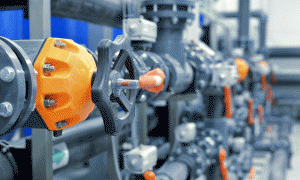Understanding the difference between cutting costs and value engineering
Tom Gilmartin of ALEC Fitout outlines the challenge of educating the local construction market about value engineering

What’s the difference between cost cutting and value engineering?
To the various stakeholders on a project, they can mean the same thing!
Clients want to save money, and designers push back as they want to protect the integrity and intent of their design. Contractors can be caught in the middle – how can we maintain design and achieve target budget?
In the UAE construction and fit-out market, the two very different concepts of cost saving and value for money have over time intertwined into a solution labelled value engineering. Clients and developers expect to reduce their budget, thus increase the value of their expenditure.
However, what happens when a client demands impossible target budgets, or the contractor introduces cheap and inferior products and materials that destroy the design intent and vision of the architect or interior design team?
Cost cutting is very prevalent in today’s construction and fit-out industry, and is slowly destroying any value in the market. Contractors struggling to achieve a target budget are unable to resource the project properly, leading to inevitable delays in delivery. Materials used to achieve unrealistic budgets are inferior and result in a poorly executed fit-out. The client’s asset opens late and requires additional maintenance and rework. Arguments regarding extension of time and final payment ensue and all parties lose considerable time, energy and resources in an attempt to fight their corner.
Do we really want to continue working like this?
Thankfully, cost cutting and value engineering are not the same thing. In our experience, successful application of value engineering results in the client realising the target budget while achieving a high quality of finish and maintaining the original design intent. Easier said than done!
At ALEC Fitout, we have various levels of value engineering that apply, depending on how aggressive the client target budget is and how high the baseline specifications are. Essentially, we price a project based on design and specification, and identify the major value packages and items to see how and where to save the client money.
The first level of value engineering is to provide an alternative product or material to the specified one. For example, marble is replaced by marble with similar look and performance from another source. When executing the complete fit-out of a five-star hotel, our core business sector, the marble package can be the largest package by value and as such can generate client savings without affecting quality of finish or design.
Moving to the second level of value engineering, and depending on client target budgets, the material is substituted by another material, for example marble replaced by reconstituted stone or ceramic. This should generate significant savings for the client, but if not carefully selected can cheapen the execution of the works and fail to maintain the design intent.
Another level of value engineering is then to omit materials altogether, for example marble to walls replaced by paint. This may be acceptable in secondary areas of a project such as corridors or bathrooms, but not, for example, in a lobby or primary front of house area. Again, careful consideration from the project team is required to maintain the design intent.
Finally, value engineering can also include what we term design optimisation. Our design team work closely with the design consultant to review and revise specific details and interfaces that may result in timely or impractical installation on-site – here the value engineering does not necessarily focus on monetary savings, but is in relation to time and quality, extremely important parameters often overlooked in the pursuit of a challenging target budget.
With ALEC Fitout value engineering solutions, the emphasis is on all project stakeholders – client, consultant team and contractor – working closely together to advise, suggest and deliver quality solutions within budget that maintain, where possible, design intent.
Such a collaborative approach requires trust from all parties – and trust, as we all know, is in very short supply in the UAE construction market! It takes time to build trust between client and contractor, and this is why most of our projects are for repeat clients. We share a common goal to deliver a high-quality solution on time and within budget.
How can we successfully implement value engineering on projects?
There must be give and take between client, consultant and contractor. Identify areas and packages that are open for value engineering early in the process, to see if it is possible to achieve the target budget. The value engineering options are agreed in principle at negotiation/award stage between client, contractor and consultant team. There has to be a common goal to achieve a realistic target budget.
Once that understanding is in place, the most critical element of successfully implementing value engineering is allowing sufficient time to review and propose alternative or substitute materials for client approval. Prioritising packages based on value and sequencing on-site are also important considerations.
For example, on a five-star project we are currently executing in Dubai, where our scope includes MEP, fit-out and FF&E, our team prioritised MEP and long lead items as these had the potential to have an impact on our progress on-site.
A value engineering tracker highlights the major deviation, if any, from the specified product or material, and outlines the cost saving associated with the value engineering option. In effect, over a short period of time, a value engineering shopping list is presented to the client for approval. Each value engineering option includes a material submission and a technical data sheet, to ensure full transparency and avoid unwanted surprises for the project team upon commencement on-site. If a VE item is rejected, the original baseline specification and associated costs are considered in the offer.
Over the years, our team has successfully delivered many high-quality fit-out projects in the UAE, and each one has included some form of value engineering. The key lessons we have learnt in that time to ensure successful implementation of value engineering include:
- Define target budget and have buy-in from all project stakeholders for approval of VE items
- Target high-value packages and items initially (80/20 rule)
- Allow sufficient time for VE process
- Provide sufficient technical detail and samples for each VE item, to facilitate client approval
- Schedule all VE items in tracker and obtain sign-off from client team before commencing procurement
In summary, it is very easy for contractors and client teams to abuse the value engineering process by cost cutting and demanding unobtainable target budgets, or submitting inferior products and materials, thus affecting quality or design integrity.
It takes time, considerable resources, experience and high levels of trust between all project stakeholders to provide a high-quality value engineering solution for the client team. However, time is not always on the side of the project delivery team and trust is typically in very short supply, with project stakeholders not aligned to a common goal and working only for their own betterment.
An approach whereby both client team and contractor work together to deliver to a defined target budget within a realistic timeframe facilitates the delivery of a high-quality value engineering solution and provides a win-win solution.
























